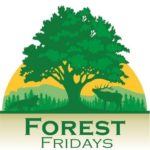Creator: Chris Firestone
NEITHER!
Feminine staghorn sumac in fall colour, discover the purple berry clusters on the terminal finish of the plant.
In Pennsylvania there are 4 species of sumac within the Rhus genus and Anacardiaceae (Cashew) household. The 4 species are native, not toxic, and never invasive. Maybe the commonest and well-known species of sumac in Pennsylvania is staghorn sumac (Rhus typhina), whose stems are coated with dense, quick, and stout hairs resembling deer antlers in velvet. Like different sumacs, it’s dioecious; the male flowers are very enticing to pollinators however don’t persist via the rising season; nonetheless the purple, furry berry clusters of the feminine crops stand out your entire yr. I’ve noticed migrating robins consuming these berries in a March snow squall. This time of yr, the sensible purple of the staghorn sumac leaves alongside the roadways add to the autumn colour.
Staghorn sumac has been referred to as invasive, particularly when seen in dense colonies shaped by its clonal behavior. Moreover, its look and related options to the frequent and invasive tree-of-heaven (Ailanthus altissima) could erroneously give somebody the concept staghorn sumac is invasive. Each species have compound leaves, however the margins of the leaflets are toothed, total, and clean in staghorn sumac, with one tooth on both aspect on the base of the leaflet serving to to distinguish tree-of-heaven. Staghorn sumac doesn’t emit the distinctive odor discovered when crushing leaves of tree-of-heaven. One other distinction is that the fruit of staghorn sumac can be utilized to make a scrumptious and refreshing drink. I don’t need to attempt that with tree-of-heaven fruit!
Staghorn sumac leaf with toothed margin on the leaflets. The rachis is roofed in dense hairs.
Tree of heaven leaflets on a leaf, discover the enlarged tooth on the base of the leaflet.
Different native sumac species contributing to Pennsylvania’s flora embody aromatic sumac (Rhus aromatica), jap winged sumac (Rhus copallinum) and clean sumac (Rhus glabra). All may be discovered rising in dry woodlands and clearings and are frequent apart from aromatic sumac.
I can virtually hear the reader pondering, “What about poison sumac?”. It most actually grows in Pennsylvania and may trigger pores and skin irritation from the resin, urushiol, identical to poison ivy (Toxicodendron radicans), if the oils get in your pores and skin. Nonetheless, poison sumac (Toxicodendron vernix) is extra intently associated to poison ivy than the opposite 4 species of sumac and is sumac by identify solely. Poison ivy and poison sumac are in the identical household because the sumacs (Anacardiaceae). Poison sumac is a multi-stemmed shrub or small tree that grows 99 % of the time in peatmoss-dominated wetlands. One is unlikely to come across poison sumac out exploring Penns Woods on dry land.
Poison sumac leaves and immature fruit, that are white when mature.
Forest Fridays is a mission of the Pennsylvania Division of Conservation and Pure Assets, Bureau of Forestry. Content material and images shared courtesy of the writer.
